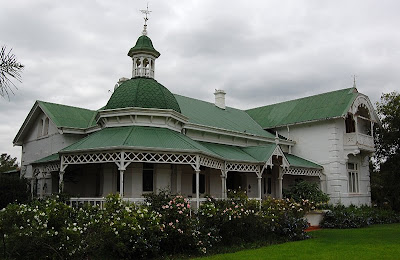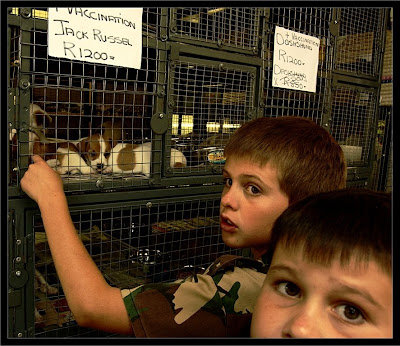It was a display of the works of eight of South Africa’s most significant documentary photographers organised by Johan at Kameraz.
Over the years David Goldblatt, George Hallett, Eric Miller, Cedric Nunn, Guy Tillim, Paul Weinberg, Graeme Williams and Gisele Wulfsohn captured significant moments in this country’s tumultuous history and still continue to do so.
Their images, the majority shot in black and white, tell the story of a county in transition...a transition that was often bloody and brutal. Today they continue to reflect our society and although the occasions photographed are less dramatic, their images are no less moving.
But I could not help but think had those pictures been entered in camera club competitions few, if any, would have been praised by the judges or awarded gold certificates.
While camera clubs undoubtedly help amateur photographers raise technical standards, they do little else. Impact, particularly in the photo-journalism category, appears completely ignored. Creating an image that is moving, tells a story, causes the viewer to mentally ask questions about the story behind the picture or awakes some sort of emotion, counts for little.
Check list
In the minds of the judges there is a checklist to tick off:
* Is the image well focussed?
* Does it follow the “rule of thirds”?
* Are there diagonals or curves that lead the eye to the focal point?
* Does the focal point present a contrast to the rest of the image?
* Is the sky a deep blue with fluffy clouds?
* Is there a highlight to be criticized somewhere in the background?
* Is the background busy? (Yes it is, it was part of a riot and I didn’t have time or opportunity to arrange the people involved!!)
* Is there a fancy border that separates the image from the screen?
Meet all of the above and success is guaranteed.
I am sure there are other “rules” but one is certainly not: “Is this picture not just another rule-meeting, boring image of a lion/impala/bird/flower/bug the likes of which we’ve all seen hundreds of times before?
The pictures taken by the photographers listed above do not follow the “rules”. They don’t have to. They capture decisive moments, tell stories, evoke emotions and document history. Maybe that’s why such photographers get to have exhibitions, sell prints and publish books while the windbag camera judges, most of whom have never worked as photo journalists, pontificate and spew crap.
Almost 30 years ago I entered an image at a local camera club. It was shot at an Eastern Cape political funeral where activists shot by police were being buried. The image is of a group of ANC cadres running through a huge crowd of township mourners, carrying the coffin of one of their slain comrades on their shoulders.
Not pin-sharp
The judges, three old farts with inflated ideas of their own significance, tore into the photograph. The criticized it for not being absolutely pin-sharp, for not having the coffin located on a diagonal bisecting an image third, they said some of the people in the picture were looking back and not at the camera.
And they were right! Those rules were all broken but some background is in order.
At the time, all political funerals and gatherings were banned and breaking the law brought swift ploice retribution.
It was winter, late in the afternoon and the light was as murky as pea-soup. This meant shooting wide open, at a shutter speed of something like 1/15th of a second. It was also in the days before auto focus and meant constantly back-pedalling while manually trying to pull the focus.
At the time picture was taken the police had just begun to fire teargas and rubber bullets so the fact the picture was not sharp, the background busy and the main subjects not neatly arranged on diagonals was hardly surprising.
But it added to the drama. It captured the feelings of panic and disorder.
As I listened to the criticism I became increasingly angry but then consoled myself with the fact, that particular image was published in around 65 countries -- I shot it while on temporary assignment for one of the world’s largest news agencies.
Do what pleases you
So what does this all mean? In essence shoot pictures that please you and that tell the story of your life and those around you.
Most of the time the so-called experts are trapped in their own, limited, narrow thinking. Go ahead and break the “rules” if by doing so you achieve the emotion and impact you desire. The only rule you should uphold is never shoot boring images, no matter how technically good they are.
The fact is, the images of many of the great photographers would not impress the puffed-up judges at camera clubs, but they’ll be around long after that bloody shot of masked weavers building a nest is forgotten!







